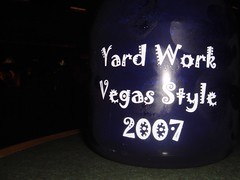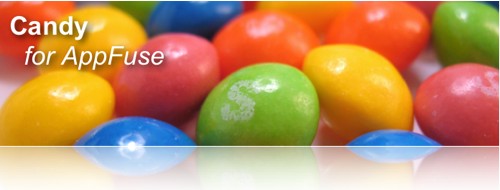From The Atlassian Developer Blog:
You appear to be running Tomcat in development mode.
(http://tomcat.apache.org/tomcat-5.5-doc/jasper-howto.html)
This means that source of every JSP is held in memory to provide
detailed messages in the event of an error. If you have large JSPs
this will hurt. It looks like this accounts for 50MB+
From Tomcat's Production Configuration documentation:
The main JSP optimization which can be done is precompilation of JSPs. However,
this might not be possible (for example, when using the jsp-property-group feature)
or practical, in which case the configuration of the Jasper servlet becomes critical.
When using Jasper 2 in a production Tomcat server you should consider
making the following changes from the default configuration.
- development - To disable on access checks for JSP
pages compilation set this to
false.
- genStringAsCharArray - To generate slightly more efficient
char arrays, set this to
true.
- modificationTestInterval - If development has to be set to
true for any reason (such as dynamic generation of JSPs), setting
this to a high value will improve performance a lot.
- trimSpaces - To remove useless bytes from the response,
set this to
true.
Seems like good information to know.
Granted, this post about how painful JSF is is almost 6 months old, but I think it's still mostly true.
Want to compare times? More than three man-weeks have been spent fixing silly JSF navigation problems. A full CRUD AJAX interface with Spring MVC and prototype in the same project took four days, and there was no previous experience with Spring MVC.
If you're going to use JSF, I highly recommend Facelets or Shale/Seam. However, those are mentioned as well:
The default view technology is JSP, even when no one in the real world would recommend it; instead, use Facelets, or Clay, or some other non-standard framework. Not trying to be sarcastic here, since Facelets is pretty good, but this complicates the hiring and education of the team and in fact invalidates the selling point of Faces 'being a standard'.
IMO, Facelets is very easy to learn. If you know how to program JSPs with JSF, you should be able to use Facelets in under an hour. When we converted AppFuse's JSF flavor from JSP to Facelets, rarely did the body have to change - we just had to change from taglibs to XML namespaces.
When you are not working with persistent data (if you are living in a cave or developing wizard interfaces) there are two scopes to store model state: the session context, which raises concurrency issues and is not recommended by the Faces community, and the conversation/process/whatever context, which is not standard and imply installing shale or seam to put even more lipstick on the pig.
There's two problems with Shale and Facelets - the activity on these projects is very low. Shale still has its creators around, so even while its seldom used, you can probably still get your questions answered. However, Facelets seems to be suffering from "developer abandonment".
Conclusion: don't use JSF simply because it's a "standard". Use other frameworks that are more actively developed and designed for the web. For component-based frameworks, the most popular are Tapestry and Wicket. Less popular ones are RIFE and Click.
If you still want to use JSF, you should probably use Seam, but don't simply use JSF because it's a standard. If it was a de-facto standard, that'd be another story.
Of course, you could also help improve JSF 2.0. But that's not scheduled for release until late 2008. I'm sure 2 or 3 commentors will claim we'll all be using Rails or Grails by then. 
I'm trying to configure Apache and Tomcat to work with a desired architecture for doing A/B Testing on my current project. Our basic idea is that we'll deploy entirely new WAR files when we have a test, then use the magic of Apache's mod_rewrite, mod_jk and possible the UrlRewriteFilter to keep the URLs somewhat consistent between version A and version B. Here's some questions I have for those folks who might've done this before:
- Is it possible to use Apache's mod_rewrite to map http://www.domain.com/?v=1 to http://www.domain.com/1 (this allows us to have two different applications/wars served up to the same domain).
- If #1 is possible, what's the RewriteRule for allowing the parameter to be anywhere in the query string, but still allowing the target to use it as the context name?
- Is it possible to use something in the WAR (likely the UrlRewriteFilter) to produce HTML that has rewritten links (i.e. http://www.domain.com/?id=1 in the WAR whose context is 1)?
In other words, can Apache forward to the correct app going in, and can that app rewrite its URLs so those same URLs are used when going out?
I believe this is all possible. However, I am having difficulty getting mod_jk to allow mod_rewrite to be processed first. If I have the following in httpd.conf, it seems like htdocs/.htaccess gets bypassed.
JkMount /* loadbalancer
Is it possible to configure Apache/mod_jk so WARs can hang off the root, but still use mod_rewrite? If not, the only solution I can think of is to use UrlRewriteFilter in the WAR to forward to another context when a "v" parameter is in the URL. Currently, the UrlRewriteFilter doesn't allow forwarding to another context. The good news is the Servlet API allows it. I got it working in Tomcat (with crossContext enabled) and wrote a patch for the UrlRewriteFilter.
Anyone out there have experience doing A/B Testing in a Java webapp? If so, did you try to disguise the URLs for the different versions?
Update:
I've got a bit of this working. The magic formula seems to be don't try to hang things off the root - use mod_rewrite to make things appear to hang off the root.
First of all, I posted a message similar to this post to the tomcat-user mailing list. Before I did so, I discovered mod_proxy_ajp, which happens to look like the successor to mod_jk. AFAICT, it doesn't allow fine-grained rules (i.e. only serve up *.jsp and *.do from Tomcat), so I'll stick with mod_jk for now.
Rather than proxying all root-level requests to Tomcat, I changed my JkMount to expect all Tomcat applications to have a common prefix. For example, "app".
JkMount /app* loadbalancer
This allows me to create RewriteRules in htdocs/.htaccess to detect the "v" parameter and forward to Tomcat.
RewriteEngine On
RewriteCond %{QUERY_STRING} ^v=(.*)$
RewriteRule ^(.*)$ /app%1/ [L]
This isn't that robust as adding another parameter causes the forward to fail. However, it does successfully forward http://localhost/?v=1 to /app1 on Tomcat and http://localhost/?v=2 to /app2 on Tomcat.
What about when ?v=3 is passed in? There's no /app3 installed on Tomcat, so Tomcat's ROOT application will be hit. Using the UrlRewriteFilter, I installed a root application (which we'll likely need anyway) with the following rule:
<rule>
<from>^/app(.*)$</from>
<to type="forward">/</to>
</rule>
So I've solved problem #1: Using URL parameters to serve up different web applications. To solve the second issue (webapps should rewrite their URLs to delete their context path), I found two solutions:
- Use mod_proxy_html. Sounds reasonable, but requires the use of mod_proxy.
- Use the UrlRewriteFilter and outbound-rules.
Since I'm using mod_jk, #2 is the reasonable choice. I added the following link in my /app1/index.jsp:
<a href="<c:url value="/products.jsp"/>">link to products</a>
By default, this gets written out as http://localhost/app1/products.jsp. To change it to http://localhost/products.jsp?v=1, I added the following to urlrewrite.xml:
<outbound-rule>
<from>^/app1/(.*)$</from>
<to>/$1?v=1</to>
</outbound-rule>
This produces the desired effect, except that when I click on the link, a new session is created every time. AFAICT, I probably need to do something with cookies so the jsessionid cookie is set for the proper path.
Not bad for a day's work. Only 2 questions remain:
- What's a more robust RewriteRule that doesn't care about other parameters being passed in?
- What do I need to do so new sessions aren't created when using an outbound-rule?
It's entirely possible that mod_proxy_ajp with mod_rewrite_html is best tool for this. Can mod_proxy handle wildcards like JkMount can? I've heard it's faster than mod_jk, so it probably warrants further investigation.
Update 2: I achieved the desired result using mod_rewrite, mod_jk and the UrlRewriteFilter (for outgoing links). Here's what I put in htdocs/.htaccess (on Apache):
RewriteEngine On
# http://domain/?v=1 --> http://domain/app1/?v=1
RewriteCond %{QUERY_STRING} v=([^&]+)
RewriteRule ^(.*)$ /app%1/$1 [L]
# http://domain --> http://domain/app (default ROOT in Tomcat)
RewriteRule ^$ /app/ [L]
And in the urlrewrite.xml of each webapp:
<outbound-rule>
<from>^/app([0-9])/([A-Za-z0-9]+)\.([A-Za-z0-9]+)$</from>
<to>/$2.$3?v=$1</to>
</outbound-rule>
<outbound-rule>
<from>^/app([0-9])/([A-Za-z0-9]+)\.([A-Za-z0-9]+)\?(.*)$</from>
<to>/$2.$3?$4&v=$1</to>
</outbound-rule>
Next I'll try to see if I can get it all working with mod_proxy_ajp and mod_proxy_html. Anyone know the equivalent of "JkMount /app*" when using LocationMatch with mod_proxy?
I found a good post from Steve Loughran on what's wrong with Maven's repositories. I agree with most of his points, but would like to point out mvnrepository.com. This site seems to provide good XML Feeds for what's been uploaded to Maven's Central Repository. If you're using Maven, you should probably subscribe to its Atom Feed.
In related news, Timothy M. O'Brien has an entry about Steve's upcoming book: Ant in Action. This book is the 2nd edition of Java Development with Ant. I have a hard time believing Erik Hatcher is helping Steve write Ant in Action - AFAIK, he's off in Rails-land enjoying himself. Regardless, I'm sure Ant in Action will be an excellent book. Java Development with Ant is one of my favorite technical books of all time and is largely responsible for inspiring me to write AppFuse. I read JDwA way back in October 2002 and used a lot of its code to develop AppFuse 1.x's Ant-based build system.
Like Tim, I still like Ant. However, AppFuse 2.x uses Maven 2 and most of the projects I work on these days use Maven 2. It may surprise some folks, but I actually like Maven 2 (not Maven 1). Sure it has issues, but after a year of using it in anger, I know how to solve most of its quirks. AppFuse 2.x users will benefit from this greatly and I'm thinking of changing its tagline to "We make Maven work." 
One of the most interesting things about moving to Maven is we were easily able to make AppFuse more like a framework than a project starter kit. We thought this is what most folks wanted - especially the ability to upgrade a project to the latest version of AppFuse. While some folks wanted this, it seems like most folks liked the full-source version that was a pain-in-the-ass to upgrade. I don't blame them. On the project I'm on, I'll likely be converting to a full-source version before the project is over. That's why APF-675 exists. I doubt we'll make it happen for the 2.0 final release, but it is on our radar of things to do shortly after. With any luck, we'll create a way to migrate projects using embedded AppFuse to full-source AppFuse.
I'd also like to point out something ironic. With AppFuse 1.x, there were a lot of folks that advocated we move to Maven. Their primary reasoning - the Ant build scripts were too long and complicated. How about a good ol' lines of XML comparison for those folks:
- Lines of Ant-related XML in AppFuse 1.x: 1655
- Lines of Maven-related XML in AppFuse 2.x: 2847
Oh wait, that's not a fair comparison. The above number is for AppFuse in SVN, which end users won't deal with. A new project created with AppFuse 2.x will likely have a pom.xml with 634 lines. That's about 1/3 of the amount needed for Ant in AppFuse 1.x. Maven hasn't exactly gotten us away from XML hell though. How about a LOC count for archetypes vs. installers:
- Lines of Ant-related XML for AppFuse 1.x framework installers: 2786
- Lines of Maven-related XML for AppFuse 2.x archetypes (including archetype's pom.xml files): Too much to count. Creating archetypes is waayyyy too complicated IMO. Basic archetypes seem to be around 740 lines (pom.xml for archetype project, archetype.xml and archetype's pom.xml), modular archetypes are around 870. 740 x 4 + 870 x 4 = 6440. I'm guessing the full-source archetypes will add another 5000 lines of XML. Ugh.
This XML-for-archetypes comparison might be unfair as well. With 1.x, you could only create a webapp, with 2.x, you can create a modular application and chop off the web-portion if you so choose.
Of course, the real benefits of moving to Maven are elsewhere. We've seen quite an uptick on the mailing list in the last few months. There's tools cropping up and I've gotten quite a few inquiries about training (yes, I do have a 3-day course on Spring, Hibernate, Ajax, Maven and AppFuse). To me, AppFuse 2.x seems more complicated than 1.x, but it seems the community thinks otherwise. Judging from the increased amount of developer activity on the project, developers seem more interested in a Maven-based system too. Then again, we are making Maven work!







